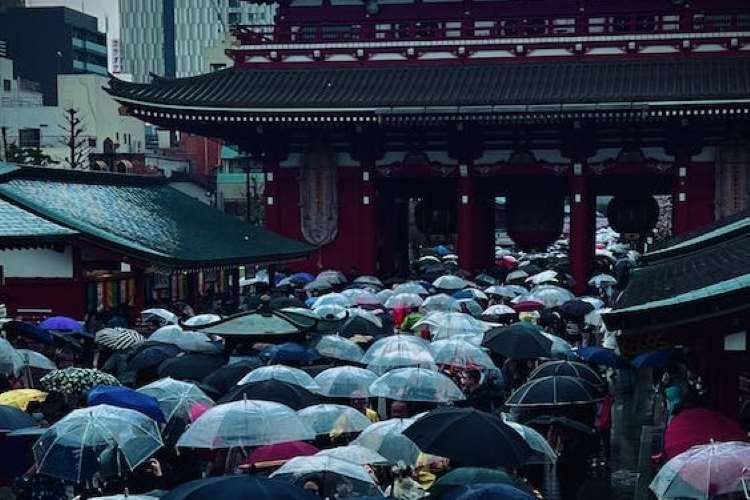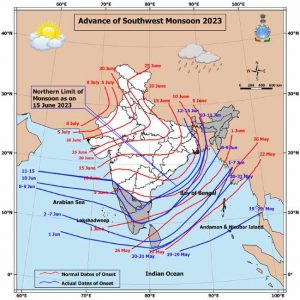
A recent forecast by private forecasting agency Skymet Weather brings grim news for the Indian economy, suggesting that monsoon rains in the Indian hinterland may be patchy until the first week of July. The India Meteorological Department has also come up with similar forecasts, presenting a dismal outlook for monsoon rains until July 6. This does not bode well for the agricultural heartland, which is looking parched and has raised concerns about the impact on the rural economy.
Indian agriculture is highly reliant on monsoon rains, and any deviation from the norm has wide-ranging impacts as monsoons coincide with the crucial time of sowing kharif crops or at least preparing the field. The central and western parts of India form the core monsoon zone, and these areas may face challenges in coping with the drying effects, suggest the forecasts.
READ | PLI scheme: Govt must address competitive imbalances, possible misuse
The agencies predict inadequate rainfall early in the season, leaving most parts of central and northwest India extremely and severely dry until July 6. A region is said to be extremely dry when rain is 60% or less than normal, and severely dry when rain deficiency is between 20% and 59%.
India has received less rainfall with rain deficiency standing at 54% since June 1. The IMD reports a deficiency of 53% over the southern peninsula, 80% over central India, 10% over northwest India, and 53% over east and northeast India.

Reasons for deficient monsoon rains
The country reported a delayed onset of the monsoon, with the southwest monsoon arriving in Kerala on June 8, marking a one-week delay compared to the normal date of June 1. This delay was initially caused by Cyclone Biparjoy in the Arabian Sea which continues to prevent the rain-bearing system from advancing to the interior regions of the peninsula. Until Cyclone Biparjoy completely dissipates after landfall, the synoptic conditions favouring the revival of the monsoon will not be on track.
Once Cyclone Biparjoy weakens after landfall, it will continue to remain as a low-pressure area and will not allow monsoon winds to pick up. On the other hand, moisture is expected to be diverted towards extreme northwest India, resulting in a scarcity of monsoon rainfall in June.
Monsoon rains are also affected by El Nino, which plays a significant role in the fate of the Indian monsoon. El Nino is a phenomenon of abnormal warming of surface waters in the equatorial Pacific Ocean, known to suppress monsoon rainfall. The phenomenon called La Nina does the opposite and aids rainfall over India.
By June 15, monsoon rains normally cover Maharashtra, Odisha, and half of Telangana, Chhattisgarh, Jharkhand, and Bihar. However, as of now, the monsoon stream is still struggling to settle over these areas. Only the northeast and the west coast are expected to benefit from the current cycle, as there are no signs of weather systems emerging over the Bay of Bengal soon. These systems are crucial drivers of the monsoon.
After making the landfall on June 15, Cyclone Biparjoy is expected to bring scattered unseasonal rainfall over Rajasthan, Delhi, Uttarakhand, and Uttar Pradesh later in the third week of June. According to Skymet’s extended-range forecast, these rains will not be the typical monsoon rains, so agriculture operations are unlikely to benefit.
Climate change over the last few decades has also had a bearing on the monsoon rainfall in India which has undergone several changes over the years. Based on the current pattern, it is highly plausible that these ongoing changes will result in intense and frequent extreme weather events in places that once struggled to even record normal monsoon rains.
The importance of monsoon rains cannot be overstated for India. The monsoon season, which lasts from June to September, alone delivers 75% of the country’s annual rainfall. These rains are crucial for agriculture as they replenish water reservoirs and aquifers. More than half of India’s cultivable land depends on rain. With agriculture contributing nearly 18% to India’s economy, monsoon rains can typically make or break the GDP growth for the year. The agriculture sector employs about 45% of India’s workforce.
Poor monsoon rainfall can lead to a dramatic fall in rural consumption, affecting sectors such as FMCG, consumer durables, and automobiles due to lower rural demand. Apart from the diminished rural economy, any deficiency in monsoon rainfall also adds to concerns regarding farm production and food security.
The decrease in agricultural output will also have an impact on food prices which can rise in the coming months. High food prices could hamper the efforts by the Reserve Bank of India and the government to control sticky inflation. The demand-supply imbalances have a cascading effect on other economic indicators such as economic growth, demand dynamics, and employment.
